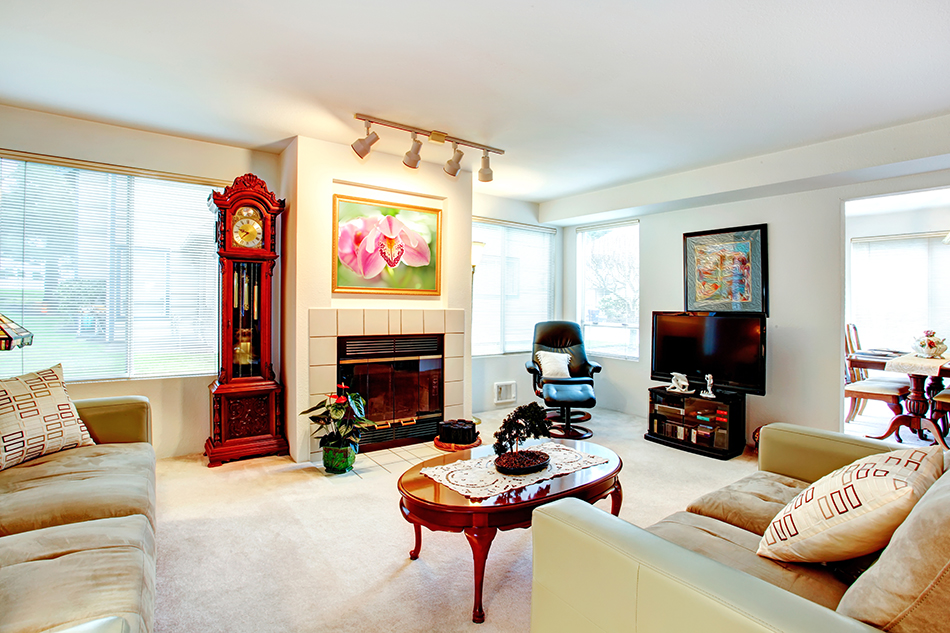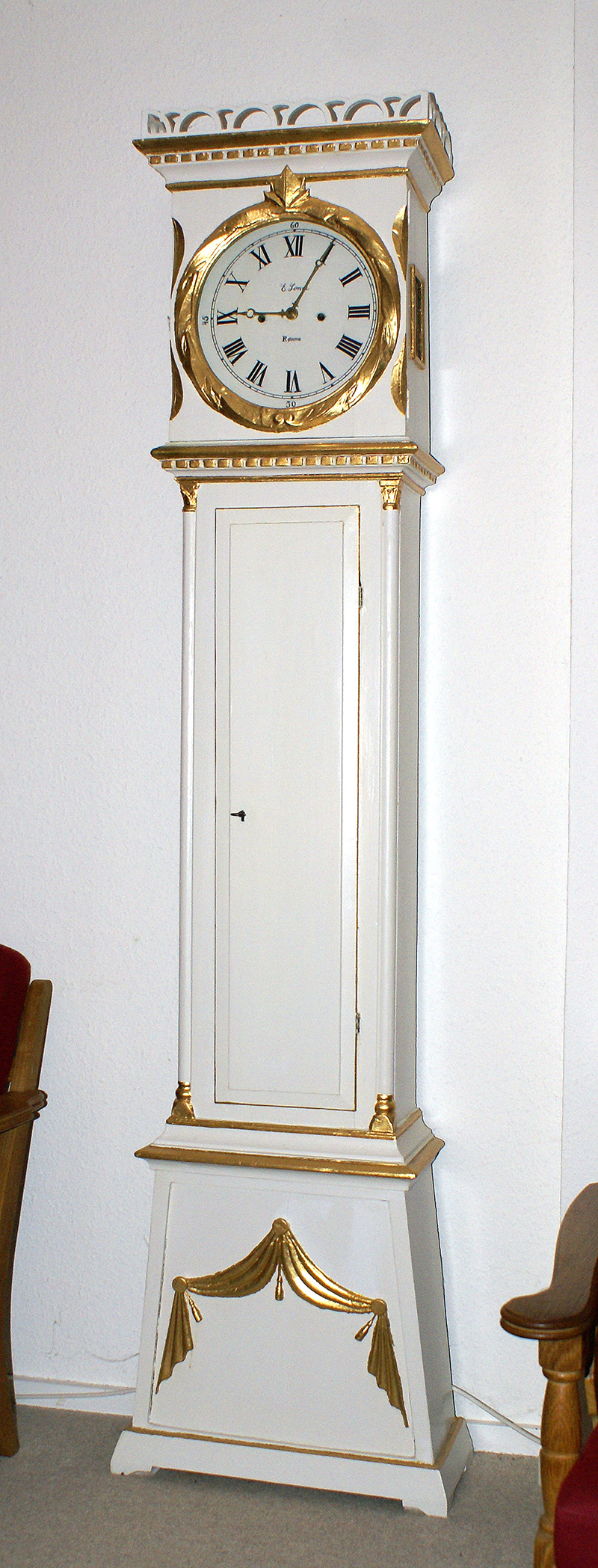Stately, stylish, and standing 6-8 feet tall, grandfather clocks are impressive pieces to feature in your home. Whether you buy them new or inherit them as family heirlooms, you can usually track the history of your clock, including the design choices and how many of that particular model were made. If you have a collector’s piece, it might be worth a significant amount of money to an interested buyer.
Types of Grandfather Clocks
Let’s take a look at the few original types of grandfather clocks to help you identify what you have or would like to add to your home. Many modernly crafted grandfather clocks are renditions of these early designs. True classics never go out of style!
Comtoise Clocks
Pronounced com-twah, these clocks originated in the French-Comte in the 1680s. You might also see them listed as Morez or Morbier clocks. Production continued for approximately 230 years, during which, 60,000 of these clocks were produced. They became so popular that they were nearly the only type of grandfather clock to be seen until the 19th century.
They were made similar to Gothic clocks, with a weight-driven mechanism. At first, the only variation was a one-piece case made of vine. Later, the clocks hung on a bracket. The dials were brass or pewter with black markings. They had a single hand.
As innovation continued, the dials were made of different materials, including paper with printed markings, and they sometimes featured a third hand to mark the date. That’s something no modern dial clock does. Instead, the third hand is the second hand, and the date is only shown in a standalone box, if at all. Still, the idea works the same way. Once set, the date moves with every two revolutions of the clock.
If the dial needed to be replaced, you could buy a brass pediment formed in the shape of a rooster and featuring the royal coat of arms. It may also have other political themes according to the period in which it was made. The makers were very patriotically and civically minded.
Eventually, though, the pediment designs changed to a cornucopia (the most popular) or sunburst or even a basket of flowers. They added a homely decoration to the clock’s face.
The popularity of comtoise clocks started to decline when, in 1871, the nation allowed imports of German-made clocks with no tariffs. Then, the more affordable German clocks also became more stylish in the French-Comte region. The people had enough of the comtoise design and wanted something new.
The outbreak of World War 1 practically ended the era of the comtoise clock. Factories in the region, as in many other areas worldwide, were repurposed to make war munitions and equipment. After the war, demand was on more modern styles of clocks. Rather than showpieces, people wanted low-cost but functional commodities to rebuild their lives and the economy.
Still, a couple of clockmakers were still making comtoise clocks until the late 20th century.
Bornholm Clocks
Credit to Mogens Engelund
Coming from the Danish island Bornholm, these clocks were produced from 1745 into the 1900s. They have a gentle crown, are frequently more square-shaped than other grandfather clocks, and feature a small window on either side from which to view the workings of the clock.
Interestingly, the design came about as sailors in the area rescued English grandfather clocks from a shipwreck. Danish tradesmen tried to repair, then copy the English design, eventually making modifications and coming up with the Bornholm style.
These clocks run on a mechanism of lead weights, each weight weighing approximately 8 pounds. You can identify the head, case, and foot of the clock’s construction. The clock’s face is made of brass or iron with a lead decorative feature in the corner. The case was likewise decorated, most often with Biblical themes.
Empire Clock
This variation of Bornholm clock has a white iron face with painted black markings. The foot features angled sides, and the corners have sculpted columns.
Mora Clocks
Swedish-made and named for the town they originated in, these clocks were likewise made in the 18th century. Mora itself is a farming community. The only reason it became a center for clock-making innovation is that during a recession, many of its citizens had to move to the bigger city of Stockholm to find work. There, they learned new trades, and when they came home, they employed their newfound knowledge to making clocks and improving their farming methods.
The popularity of the design spread, and other clockmakers all over Sweden innovated on it. In general, though, Mora clocks fit into tighter spaces than English-style grandfather clocks. They typically measure 28 inches wide, 99 inches high, and 12 inches deep. They run on cast-iron weights and provide eight-day movements.
Those clocks from the north part of Sweden were usually narrower than those from the south. The ones in the south often featured decorations and stylish curves.
Again, they declined in popularity only when more German and American imports penetrated the market.
Fryksdall Mora Clock
One distinguishable variation on the Mora clock was the Fryksdall clock. It’s recognized by the carving embellishments. It is thought to be more of a high-end clock and was widely owned by rich people.
City Mora Clock
This design of Mora clocks made rather a strong stylistic declaration, generally due to the fact that it was completely painted. They were meant for use in more ornamental areas. It was a style choice that collectors today recognize, though they wouldn’t necessarily place as a showpiece in their own home.
Country Mora Clock
This is among the least ornamental Mora clocks and has rather a plain look. It was a popular option of clock in poorer households and was frequently gifted to couples on their wedding day. The Country Mora clock utilized a lower quantity of glass in its making and generally included a simpler hood crown.
Which Type of Grandfather Clock do You Have?
Does the description of one of these styles of clocks appeal to you? Do you have a clock modeled after one of these styles, or perhaps have an original? To verify, have it inspected by a knowledgeable antique dealer.








